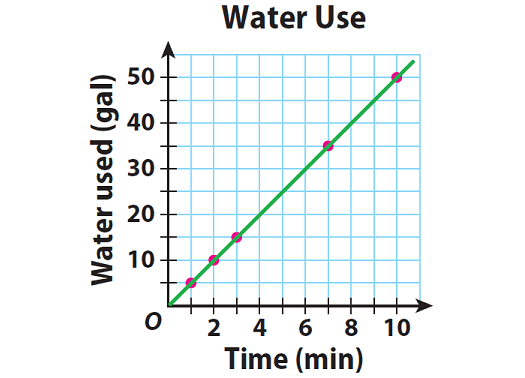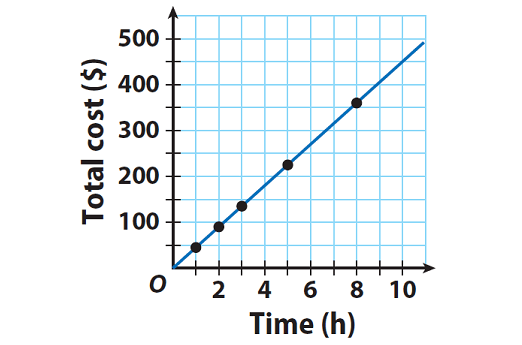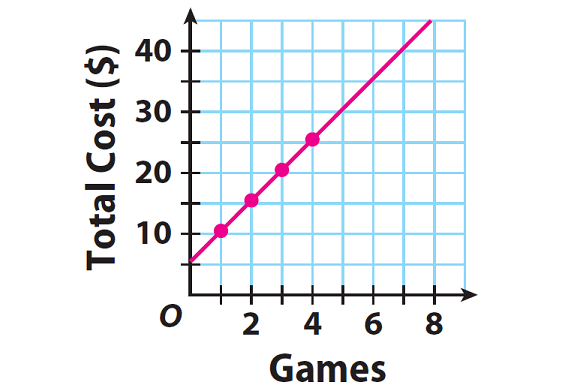IDENTIFYING PROPORTIONAL RELATIONSHIPS
Subscribe to our ▶️ YouTube channel 🔴 for the latest videos, updates, and tips.
A rate of change is a rate that describes how one quantity changes in relation to another quantity. A proportional relationship between two quantities is the one in which the rate of change is constant. In graph, a relationship is a proportional relationship, if its graph is a straight.
Example 1 :
Examine the given table and determine if the relationship is proportional. If yes, determine the constant of proportionality.

Solution :
Let us get the ratio of x and y for all the given values.
4/48 = 1/12
7/84 = 1/12
10/120 = 1/12
When we take ratio of x and y for all the given values, we get equal value for all the ratios.
Therefore the relationship given in the table is proportional.
When we look at the above table when x gets increased, y also gets increased, so it is direct proportion.
Then, we have
y = kx
Substitute x = 4 and y = 48.
48 = k(4)
12 = k
So, the constant of proportionality is 12.
Example 2 :
Examine the given table and determine if the relationship is proportional. If yes, determine the constant of proportionality.

Solution :
Let us get the ratio of x and y for all the given values.
1/100 = 1/100
3/300 = 1/100
5/550 = 1/110
6/600 = 1/100
When we take ratio of x and y for all the given values, we don't get equal value for all the ratios.
Therefore the relationship given in the table is not proportional.
Example 3 :
The equation y = 5x represents the relationship between the number of gallons of water used (y) and the number of minutes (x) for most shower heads manufactured before 1994. Graph the above relationship and check whether it is proportional.
Solution :
Step 1 :
To graph the given relationship, let us plug some random values for x in y = 5x as given in the table.

Step 2 :
Write the data in the table as ordered pairs (time, water used).
(1, 5), (2, 10), (3, 15), (7, 35) and (10, 50)
Step 3 :
Plot the ordered pairs and connect all the points.

Step 4 :
Because the line drawn through the points goes through the origin, the relationship is proportional.
Example 4 :
The table shows the relationship between the amount charged by a housecleaning company ($) and the amount of time worked (hours). Is the relationship a proportional relationship? Explain.

Solution :
Step 1 :
Write the data in the table as ordered pairs (time, water used).
(1, 5), (2, 10), (3, 15), (7, 35) and (10, 50)
Step 2 :
Plot the ordered pairs and connect all the points.

Step 3 :
Because the line drawn through the points goes through the origin, the relationship is proportional.
Example 5 :
Jared rents bowling shoes for $6 and pays $5 per bowling game. Is the relationship a proportional relationship? Explain.

Solution :
Step 1 :
Write the data in the table as ordered pairs (time, water used).
(1, 11), (2, 16), (3, 21), and (4, 26)
Step 2 :
Plot the ordered pairs and connect all the points.

Step 3 :
Because the line drawn through the points does not go through the origin, the relationship is not proportional.
Subscribe to our ▶️ YouTube channel 🔴 for the latest videos, updates, and tips.
Kindly mail your feedback to v4formath@gmail.com
We always appreciate your feedback.
About Us | Contact Us | Privacy Policy
©All rights reserved. onlinemath4all.com
Recent Articles
-
AP Calculus BC Problems with Solutions
Dec 20, 25 10:51 AM
AP Calculus BC Problems with Solutions -
AP Precalculus Problems and Solutions (Part - 1)
Dec 20, 25 10:49 AM
AP Precalculus Problems and Solutions (Part - 1) -
AP Calculus AB Problems with Solutions (Part - 1)
Dec 20, 25 10:49 AM
AP Calculus AB Problems with Solutions (Part - 1)
